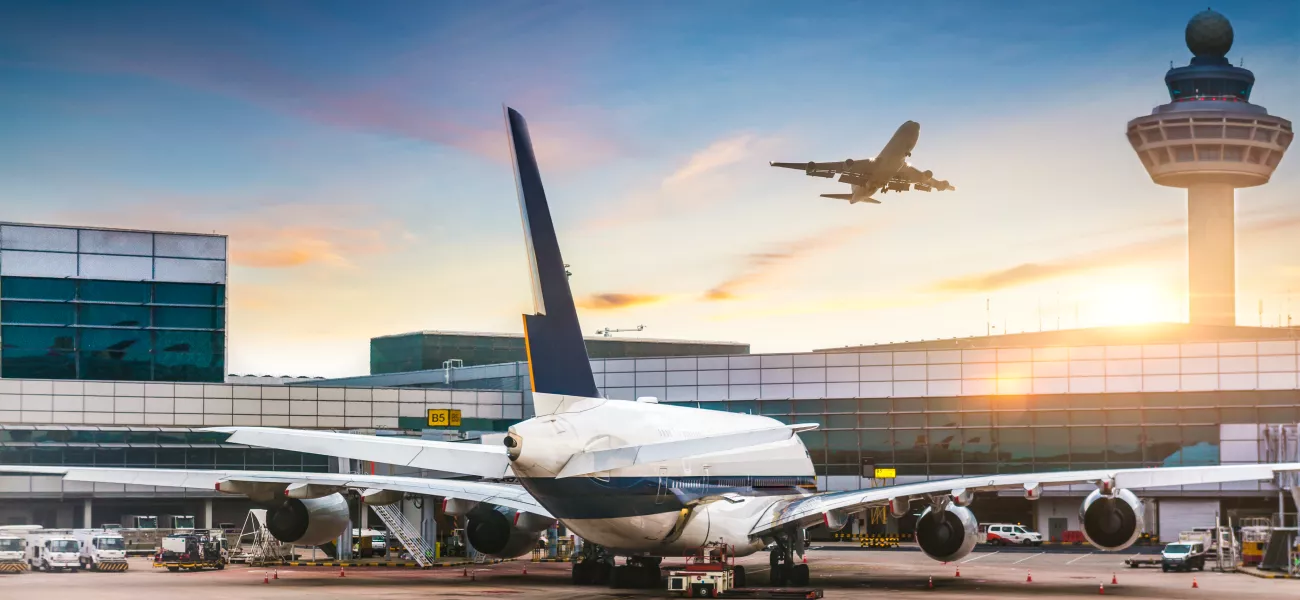
The digital apron and digital tower are some of the latest airport innovations to enhance operational efficiency through real-time data awareness. But whether leveraging the advantages of this kind of digital management system or optimizing the operational efficiency of the traditional apron and control tower, real time surveillance data from across the airfield remains crucial.
Only by ensuring the safety of personnel and passengers, which also means the need for strong security, can the most efficient operations take place. To achieve safety and security across the apron and airfield, effective network cameras are vital. This means high image quality, in all weathers, and at night, to quickly identify potential threats, combined with the capabilities of deep learning analytics to create automated alerts.
Even if the move to implement the digital apron or tower is yet to be made, enhancing the potential of the existing camera surveillance system can improve the efficiency of airport operations as a result of more robust safety and security.
Securing the airport perimeter
The key challenge at the airport perimeter is preventing unauthorized access. Whether an organized, multi-person incursion, like the climate protests at Berlin and Munich airports in 2022, or individuals acting alone like the recent incident in Atlanta, the disruption will enforce shutdowns and delays in operations.
The most effective way to protect the perimeter is to identify any potential signs of attempted entry before they can develop, and this is achieved with a network camera system combining edge-based video analytics. With a camera network that provides vision covering the length of the perimeter, its analytics capability monitors data from all connected devices, providing automatic alerts, either to a single operator, or a compact team.
Analytics can classify between humans and vehicles, and is also able to distinguish vehicle type. As a result, analytics can alert an operator to a potential intrusion while autotracking the threat by PTZ. The security team can then issue a speaker warning to the threat, or a security guard can be dispatched before intrusion can happen.
Low visibility weather or hours of darkness add an identification challenge, especially with long distances to cover across the airfield. Technology that delivers full color video, even during very low light, can also be supported by thermal cameras that provide detection in darkness and any weather condition over long distances. For effective video surveillance over wide areas at night or low visibility, radar can also be used, and these technologies can also be combined.
Optimizing airfield safety
Inside the perimeter and monitoring airfield operations, the primary focus is the safety of personnel and passengers, while minimizing safety alerts also ensures efficient air traffic operation. To achieve this, an effective camera network provides the most efficient and reliable airfield surveillance.
Covering the airfield’s wide area, high definition panoramic cameras give effective monitoring while reducing the camera count to lower the total cost of ownership. Two panoramic cameras can provide a 360° view, instead of using multiple individual cameras where mast installation for each can cost as much as $100,000 alone, plus the operational downtime for their installation.
Along the runway, the safety imperative is at its highest, with the need to detect and respond with urgency to incidents that could occur on takeoff or landing. For safety monitoring, high image quality is essential, even in darkness and low visibility weather. However, when camera resolution is increased, this can reduce light sensitivity, so a camera that can achieve both requirements is vital.
To add detail and clarity, surveillance can be supported by PTZ cameras that provide up to 31x optical zoom. Airfields are open and exposed though, so its key to ensure that the cameras you’re using can still provide high quality images even in high winds and during torrential rain.
Combined with both panoramic and PTZ camera technology, deep learning analytics enables alerts that can be set to any potentially hazardous presence or activity. Automated alerts also enable a single security operative to achieve alone what a much larger team could otherwise be capable of, driving down the overall cost of surveillance and improving efficiency.
Safety and security on the apron
With a high concentration of airport staff, from logistics to landing crew, as well as passengers, the apron, or ramp, carries a high safety risk. While effective monitoring for health & safety is vital, to maintain efficient airport operations, the apron needs to avoid downtime, and the effective use of surveillance cameras can achieve this.
Like the airfield, wide area surveillance coverage is required, so panoramic cameras are optimal. To enhance image performance across the apron, 14MP video stream resolution adds clarity for visual identification, and this high image quality is also important to support analytics alerts.
Analytics is an important feature to increase safety on the apron by detecting and alerting operations teams to potential hazards. This can include the movement of vehicles around the apron, and analytics applications can be customized by developers to detect obstructions such as debris in the path of taxiing aircraft. Analytics can also help to keep check on the safety of personnel working on the apron, including PPE detection. And, if an incident, such as a fire, does occur, analytics alerts can ensure a rapid emergency response, providing an extra layer of security to more traditional alarms.
Efficiency, safety, and security
Optimizing camera surveillance on the airfield and apron can enhance the transition to digital management systems. The network camera is the ultimate sensor, and the input data it provides can enhance operational efficiency by minimizing any disruption and ensuring smooth processes.
But even before moving to the digital apron or digital tower, an effective network camera system will enhance safety and security throughout the airport. This can be achieved by optimizing the value of an existing network through the integration of useful camera functionality, and these enhancements can also reduce the surveillance system’s total cost of ownership.
